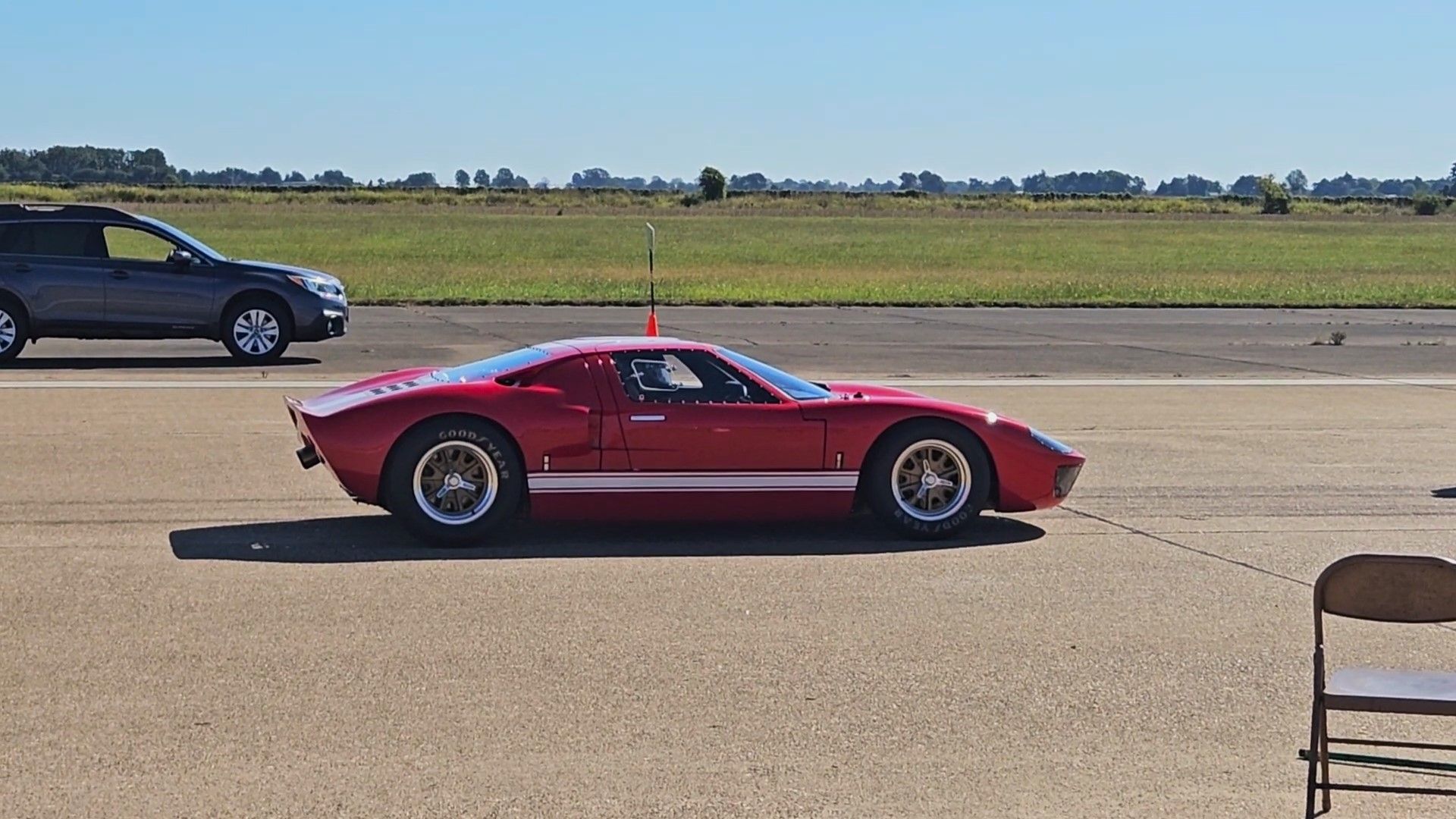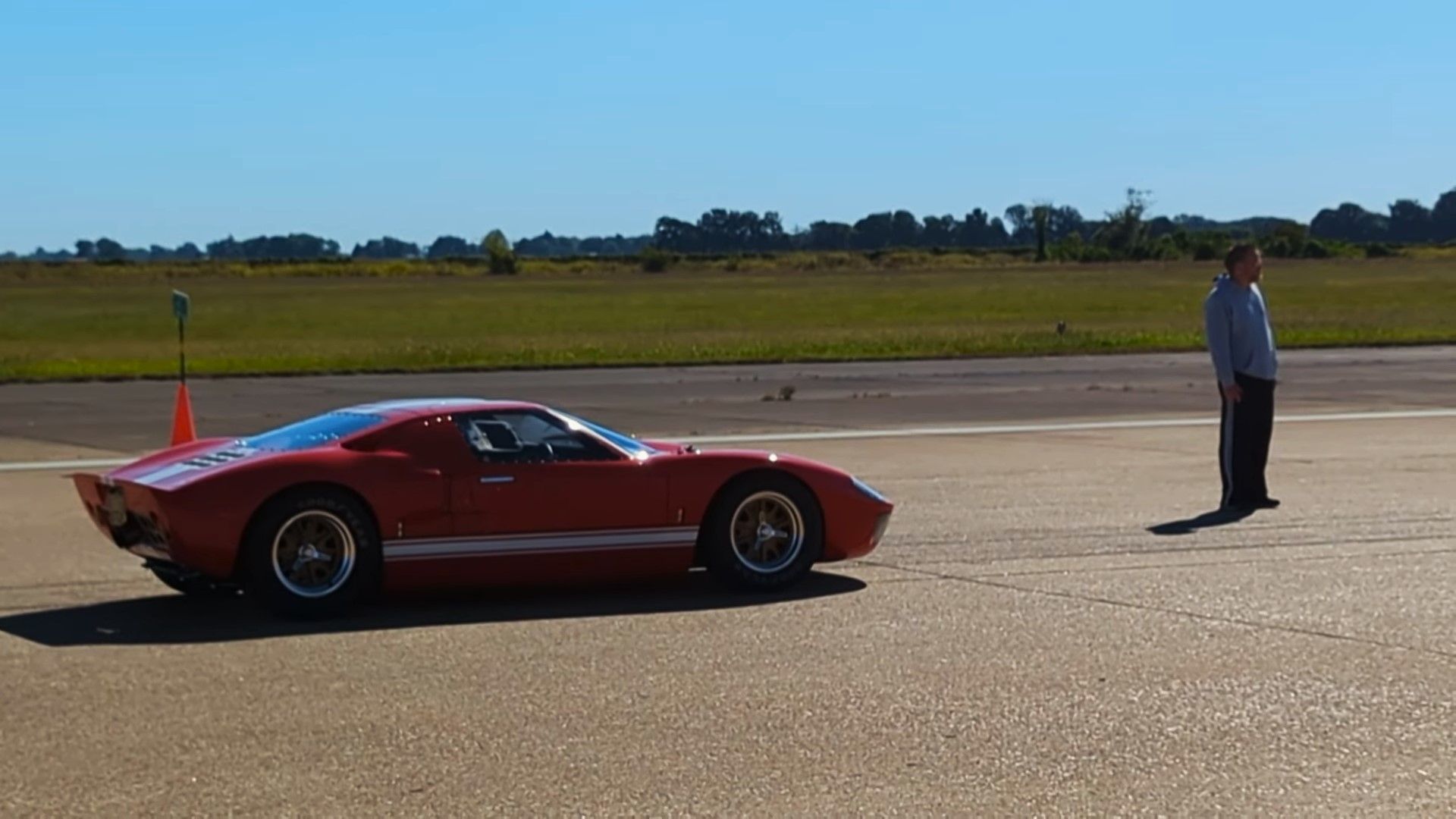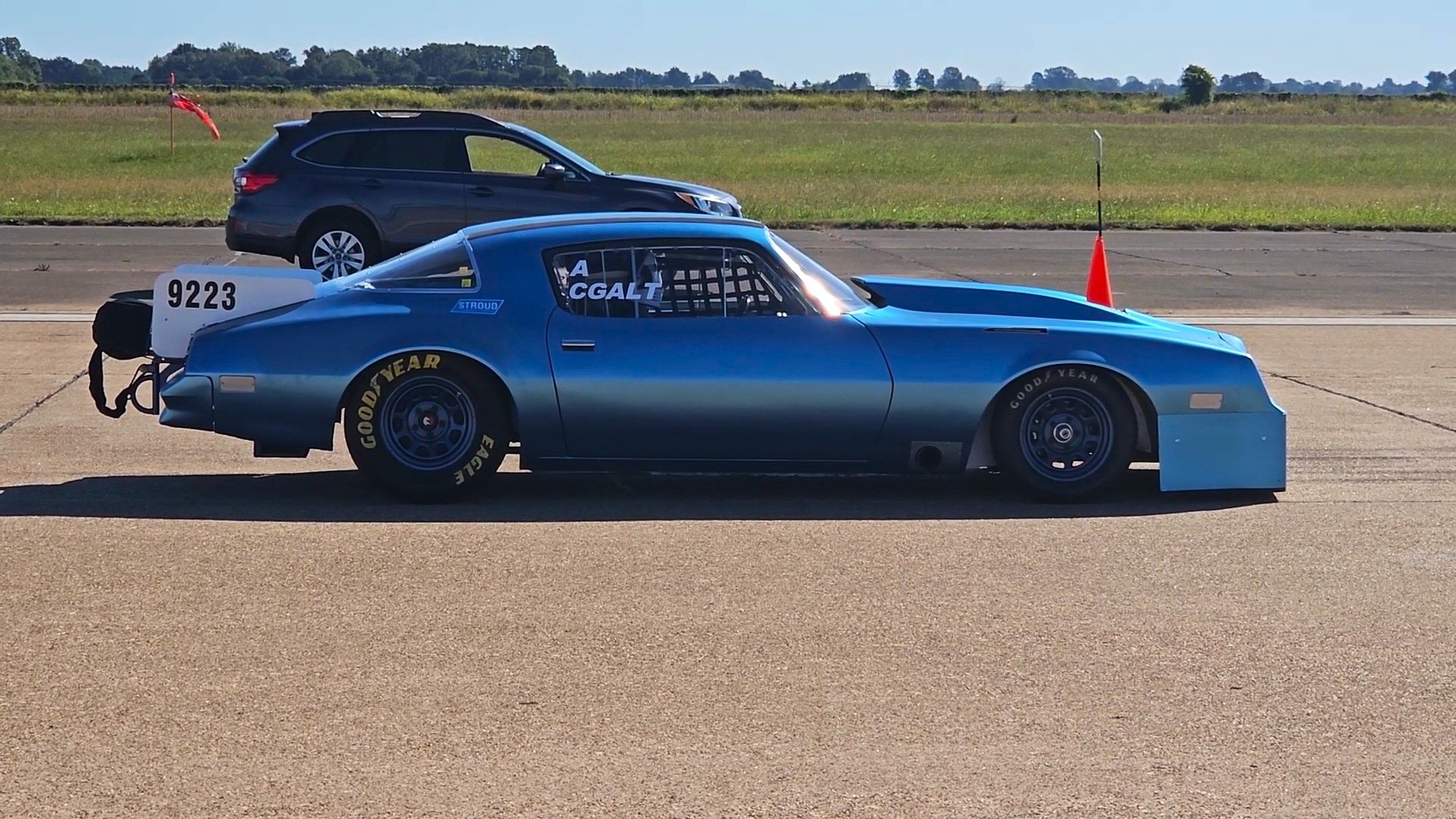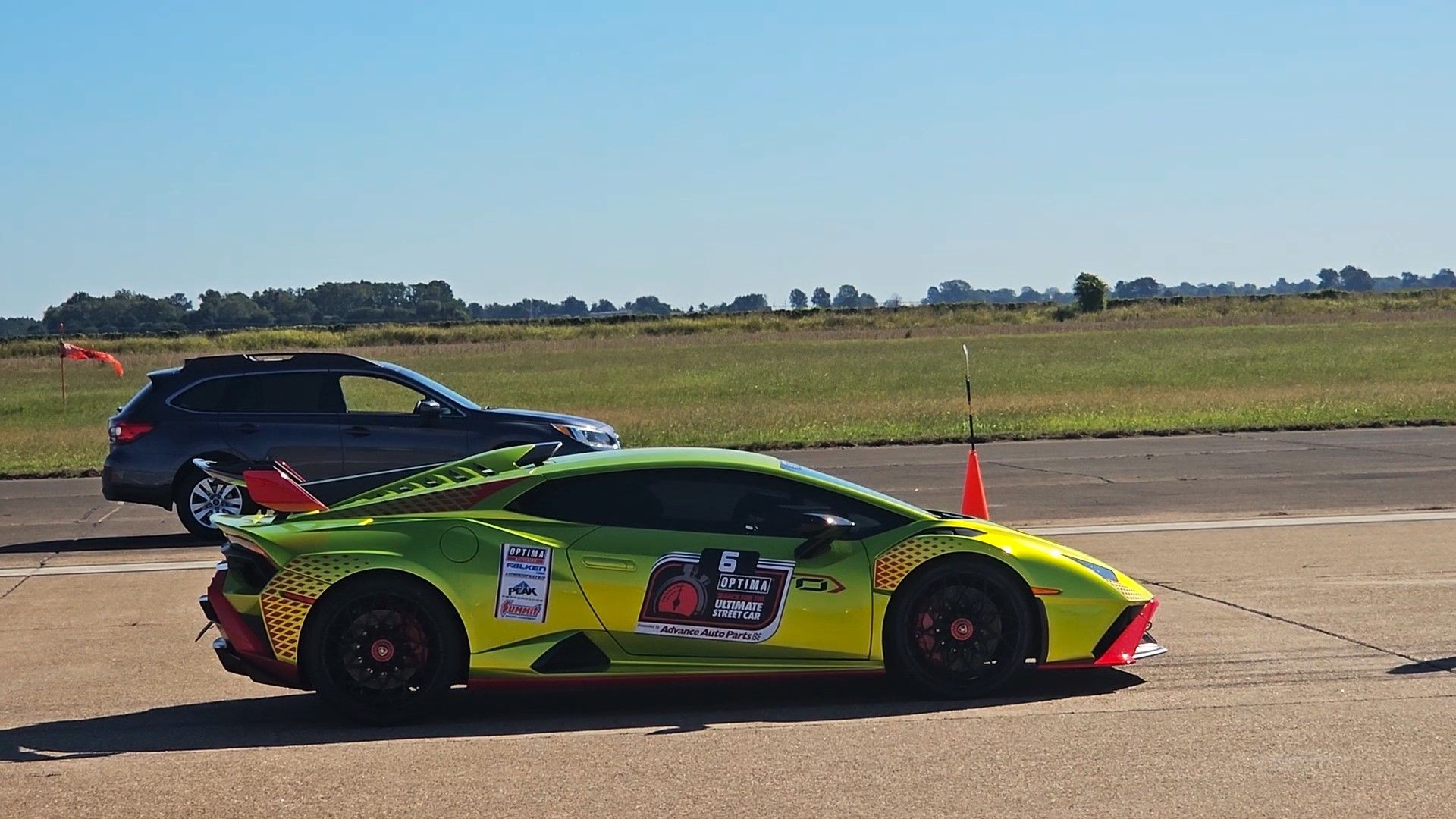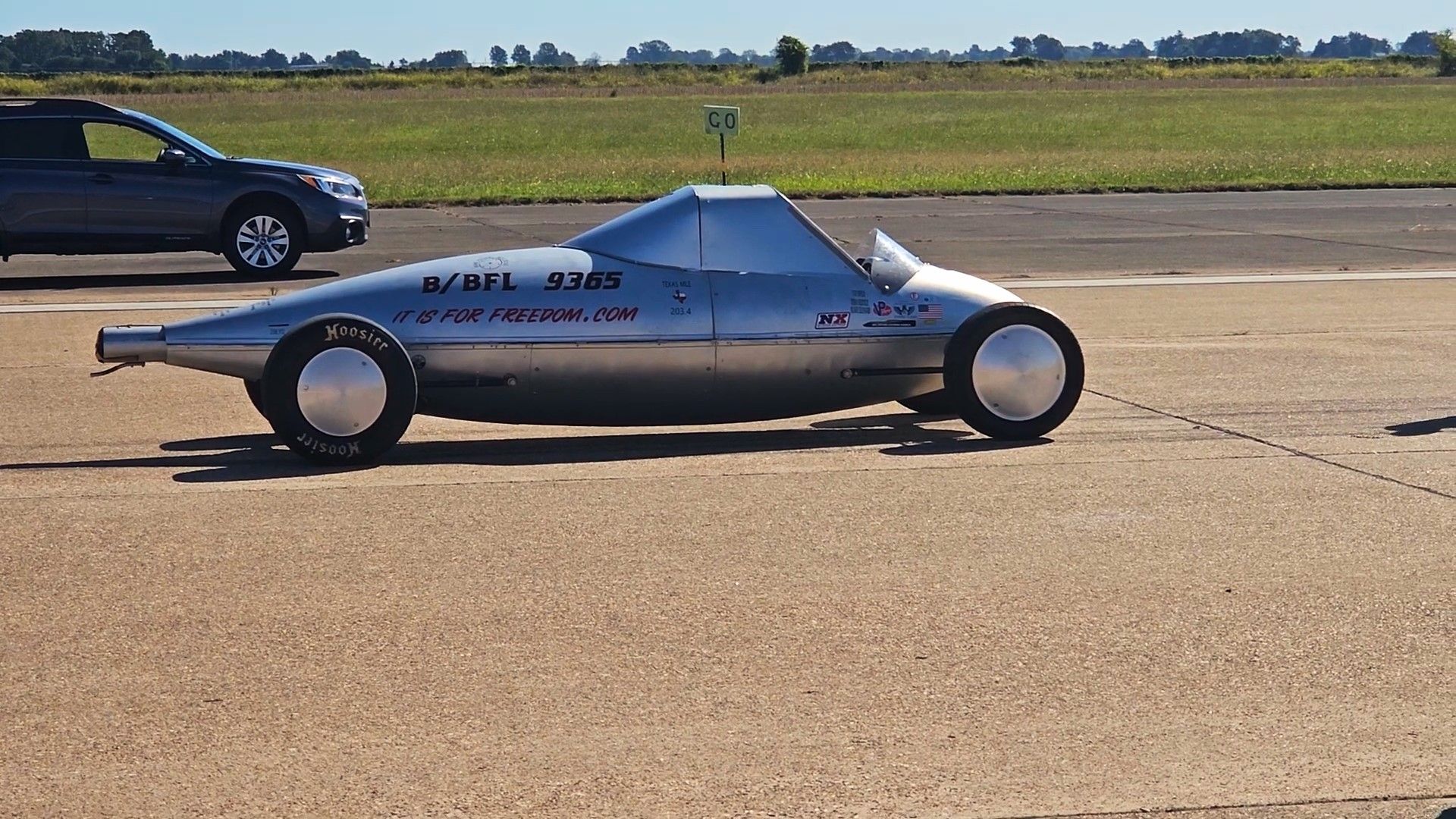There’s something truly exciting about the concept of speed, and the automotive industry has been pushing the boundaries of what’s possible for over a century. In the 1980s supercar Manufacturers such as Ferrari and Porsche competed to see which production car would be the first to reach the holy grail of 200 mph. Fast forward to the 2020s and manufacturers like Bugatti and Koenigsegg are now breaking the 300 mph barrier.
However, the real kings of speed can be found not on the street, but in the world of motor sports, in particular, drag racing and land speed records. The ECTA Horsepower Harvest Event in Arkansas is America’s premiere top speed asphalt event, with everything from drag spec muscle carssupercars, motorcycles, sports carsand even converted aviation fuel tanks. YouTuber Junkcar Willy was in Arkansas checking out the event and some seriously cool cars to boot.
Bonneville veterans built ECTA for East Coast riders
Utah’s Bonneville Salt Flats are steeped in record-breaking folklore, and Speed Week remains a premier event for manufacturers, hot rod enthusiasts and adrenaline junkies alike to try and see how fast they can go with some of the world’s most incredible machines. world. However, this is not the only place in the United States where gears strive to break speed records.
First founded by two Bonneville veterans, Tom Sarda and John Beckett, the East Coast Time Trial Association (ECTA) was conceived as an alternative to Bonneville for East Coast racers who didn’t want to travel over 2,000 miles to Utah.
Unable to find suitable dry lakes on the East Coast, Sarda and Beckett decided that running on asphalt was the next best choice, and ECTA began holding top-speed events at Maxton Air Force Base, North Carolina.
Today’s ECTA Horsepower Harvest Event takes place at the Blytheville Aeroplex in Arkansas over quarter-mile, half-mile, one-mile and two-kilometer distances. Here are some of the greatest vehicles from the west, all trying to go as fast as possible.
1957 Chevrolet Bel Air “Old Stubol” that can reach 217 mph
1957 ‘Old Stewball’ Chevrolet Bel Air Specifications
|
Engine |
10.35L DART V8 |
|
power unit |
Front engine, rear drive |
|
Method of transmission |
3-speed automatic |
|
power |
1150 hp |
|
A turning point |
903 lb-ft |
|
The highest speed |
217 mph |
(figures courtesy of Dallas Area Classic Chevys/ECTA)
This 1957 Chevy Bel Air has more than half a century of history. The first competitions on road tracks and drag strip tracks took place in 1960. According to dallasclassicchevy.com, “Old Stewball” competed in several AHRA and NHRA events in the 1970swith the car competing in its last drag race in 1978 before being put into shed storage for 22 years.
Fast forward to 2000 and owner Tom Hurley decided it was time to take the car out of retirement and build it into a Bonneville Week of Speed machine. Tom originally thought it would be as simple as putting the engine in the front and driving it to Utah. However, the construction process took more than eight years, and the Bel Air didn’t hit the salt flats until 2013.
Owner Tom Hurley looks very calm despite hitting 203 mph
- This 1957 Chevy Bel Air has been used as a race car since 1960
- By 1978, the Bel Air competed on both the track and the drag strip
- The car sat under a shed for 22 years until owner Tom Hurley decided to restore it to conquer the Bonneville Salt Flats
- The construction took more than 8 years, and further improvements were made later
- Old Stubol managed 217 mph at Bonneville and a respectable 203 mph at Horsepower Harvest
- The name Old Stewball comes from the song of the same name performed by Peter, Paul and Mary
Over the next few years, Tom continued to bring the Chevy to Speed Week, encountering various teething problems along the way. However, in 2018, Tom managed to get “Old Stuball” to reach a top speed of 217 mph with an average speed of 209 mph over the mile-long stretch.
The power of this incredibly fast Bel Air is 632 cubic meters. in (10.35 L) DART big block V8 with twin Holley Dominator SP 1150 CFM carburetors and DART aluminum heads producing 1150 hp. and 903 lb-ft of torque. While not quite hitting the heights of that 2018 Bonneville run, Tom manages a very respectable 198 mph at the one-mile mark, reaching 203 mph at the two-kilometer mark at the end of the run.
MKI Ford GT40 took the podium
Technical characteristics of the Ford GT40 MK1 (1968-69).
|
Engine |
302 cu-in (5-liter) V8 |
|
power unit |
Mid-engine, rear-wheel drive |
|
Method of transmission |
5-speed mechanics |
|
power |
425 hp |
|
A turning point |
398 lb-ft |
|
The highest speed |
211 mph |
(figures courtesy of Hemmings/ultimatecarpage)
The Ford GT40 is a car that needs minimal introduction. Built with the sole purpose of embarrassing Ferrari and winning the 24 Hours of Le Mans, it did just that for four years on the bounce from 1966 to 1969. While it was the MK2 that brought Ford the famous 1966 Le Mans victory with Chris Amon and Bruce. McLaren behind the wheel, the MK1 is perhaps the most beautiful and iconic version of the Blue Oval’s best-loved supercar.
This Ford GT40 only does 157 mph and is potentially a replica
Ford GT40 Racer Quick Facts
- The Ford GT40 won the 24 Hours of Le Mans 4 years in a row from 1966 to 1969.
- Ford built a car with the sole intention of beating Ferrari
- Despite various evolutions culminating in the GT40 MKIV, regulatory changes forced Ford to use the GT40 MKI in 1968 and 1969.
- This GT40 MKI may be a replica car as some of the window rivets and exhaust do not appear to be factory
After two years of dominance and numerous evolutions, Ford returned to using the MK1 GT40 in 1968 and 1969 as the FIA banned unlimited power engines for the 1968 season. Power figures differ between the 1965 MK1 cars and the later 1968-69 cars, with the latter having a naturally aspirated 302cc engine. in a (4.9-liter) Windsor V8 with twin Weber carburetors producing 425 hp. and 398 lb-ft of torque, and has a top speed of 211 mph.
While Willy won’t give us lap speeds for the GT40, we can see that it manages to reach 157.7 mph at the two kilometer mark. The only thing to note is that this could be a replica GT40 car as the window rivets and exhaust do not appear to be factory. Regardless, it’s still a seriously cool car.
1977 Pontiac Firebird is beautiful in blue
Next up is a beautiful drag-spec 1977 Pontiac Firebird complete with induction hood and massive chin spoiler commonly seen on drag racers. The Firebird has its own racing pedigree, competing in the Trans-Am series (hence the model’s name) in the 1960s and 70s. The governing body, the SCAA, was initially unhappy with the Firebird’s competition because the smallest available engine size was larger than the 400cc class requirements. in (6.6 liters).
However, Pontiac made a deal with the SCCA, paying them $5 for every car sold, to compete. While there aren’t any engine specs for this particular Firebird, with a top speed of 189 mph at the mile mark, we’d guess the car isn’t making stock power.
Modern supercars also hit the asphalt
2021 Lamborghini Huracan STO specifications
|
Engine |
5.2 liter V10 |
|
power unit |
Mid-engine, rear-wheel drive |
|
Method of transmission |
7-speed automatic with double clutch |
|
power |
631 hp |
|
A turning point |
417 lb-ft |
|
The highest speed |
193 mph |
(figures courtesy of Lamborghini)
It’s not just classic muscle cars that want to go fast, as the 2021 Lamborghini Huracan STO will test their mettle. The Huracan STO has a 5.2-liter naturally aspirated V10 that produces 631 hp. and 417 lb-ft of torque with a claimed top speed of 193 mph.
Despite being one of the few rear-wheel-drive Huracan options, the STO gets off to a great start, with the excellent V10 wailing down the runway, eventually reaching a top speed of 188mph at the 2km mark. Willy expected the Huracan to break the 200 mph barrier. However, since the STO is the most track-oriented Huracan, the added drag from the rear wing and front splitter means there will always be a compromise on top speed.
The WW-II Belly Tank Racer is a homemade hot rod
Perhaps the most outlandish vehicle to hit the runway is this pot-bellied tank racer. Also known as dump tanks, these machines are completely custom built using repurposed dump fuel tanks from World War II aircraft, which are then modified by fitting the engine and four wheels to the outside of the frame.
Thanks to their lightweight and streamlined design, these outboard tank racers can reach serious speeds if you’re brave enough to pilot them. While there aren’t any specs on this car, the sound makes it clear that it has a V8 engine, and it’s seemingly powerful as it manages to hit 203 mph at the mile mark.
There are far more amazing cars than we can cover here, including a Mustang with a fox body and tons of vintage bikes, so we recommend watching the full video to see what might be the coolest top speed you’ve ever heard of. .
